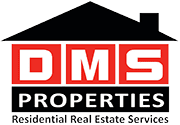What To Look For in a Home
Choosing a place to live can be one of the most exhilarating experiences of a lifetime. We have learned that the best approach for a buying is to be prepared. Literally, you should do some homework. Our observation is simple. Your move can be an improvement if you duplicate what you like in your present community and avoid what you dislike.
House Hunting Begins At Home
The search for your new home should start in your present home. We have a list of questions to stimulate your thinking. They will help you to identify your needs and preferences.
Once you’ve clarified what you like in your present community, you will have a better idea of what you want to find. You will then be able to clearly tell us your preferences. That will help us to find exactly what you want.
Also, the time to think about selling the home is when you’re buying it. That’s because the things that appeal to you as a buyer today will probably also appeal to the buyers of tomorrow when you decide to sell. Conversely, what turns you off will be a turn off to them, too.
A careful house hunter will benefit years from now when it’s time to sell to an equally value-conscious buyer. You can build your buyer knowledge by reading newspaper classified ads, homes-for-sale magazines, Realtor web sites and visiting open houses.
County And City Questions
There are some key questions that you should ask yourself when you’re thinking about finding your new home.
-
Would you characterize your present area as urban, suburban, semi-rural, or rural? Is the population density low, medium, or high? Is the population decreasing, stable, or increasing?
-
What natural features are the most significant to you? Do you prefer woods, hills, flat land, a river, an ocean shore, a man-made lake, or streams and ponds?
-
How do you commute to work? Do you walk, drive, car pool, taxi (Uber or Lyft), bus, train? How far must you travel and how long does it take every morning and every evening? Do you use available public transportation for local trips or to visit close-by communities? Can someone reach your home on public transportation? Do you telework?
-
Where do you do your shopping? Do you shop in a central commercial district, a shopping mall, or supermarket shopping centers?
-
What about community shops or home delivery? Imagine a list of typical stops that you make in one week. How many miles and how much time would visiting the entire list require. Do you want greater convenience?
-
What types of schools does your family attend now? These can range from grade school to graduate school, and from day care needs to special vocational training. Think about what facilities will you require in the next few years. Do you have or expect any special needs or plans? Although it’s extremely difficult to compare quality of education, some statistical indicators can be helpful. The most important ingredient to most people is the relationship between the teacher and the student. Things to consider are the average class size at each grade level, the comparative standardized text scores, the average salary of teachers, and the percentage of high school graduates who go to college. You can research all of this on the school board web site.
-
What kind of recreation and entertainment does the area offer? Do you like to access music, movies and live stage, sports arenas, museums, or nightlife? What types of indoor and outdoor sports facilities are available? Are there public parks, country clubs, athletic clubs, fraternal groups? Do you require any special facilities?
Choosing A Neighborhood
After you know what you want in the larger view of the county and city, this section will help you zero in on your neighborhood preferences. In real estate, an old maxim says there are three criteria that determine market value: “location, location, and location.”
The concept of neighborhood isn’t as precise as county or city. Some people consider the boundaries to be the district around a grade school. Others consider it “walking distance,” more or less within a half-mile radius. Wherever you draw the line, a neighborhood is the immediate area around your house.
People and Services
Every neighborhood can be described from three standpoints: its people (your future neighbors), what it looks like, and where its services are located. Any neighborhood description is highly subjective, though. This brings up another observation from our experience. No matter how much hard data you can gather about a neighborhood, nothing compares with what you can learn from the people who live there. Whether it’s fellow workers, letter carriers, or people at a bus stop, the neighbors are the best observers of a neighborhood. It is a good idea for you to visit a neighborhood and talk with the people there to help you make your decision.
Neighborhood Questions
You should talk to as many people as you can in the neighborhood, and ask them the following questions:
-
Do neighbors socialize regularly? Do they hold block parties, picnics, or holiday parties? Do they organize sports teams? What are the ways they have met their neighbors? Was it by walking a dog, commuting, a PTA meeting, at parties, at sports games, or while gardening?
-
What types of dwellings are in the neighborhood? Are there high-rise or low-rise apartments, condominiums, multi-family structures, single-family houses, or mobile homes? How much do the neighbors care for their lawns and gardens? Are the houses maintained “like new”, adequately, poorly? Is there a Homeowners Association? How old are the houses? Are they more than 30 years old? Are they 15 to 30 years? Are they mostly new? How far apart are the houses? Are property upgrades common? Are there things like swimming pools, tennis courts, fences, walls, patios, and extensive landscaping?
-
How are the cars parked? Do people park their cars mostly in garages, driveways or on the street? This can impact the overall appearance of the neighborhood.
-
How does the neighborhood rate for convenience? Can you walk to shopping or is a car necessary? List your five most frequent destinations. Are they clustered in one stop-and-shop location? How much time is required for fire, police, or ambulance services to arrive in an emergency? How close are cultural centers, restaurants, theaters, and parks or playgrounds?
-
How do the children get to schools and play areas? Is it by walking, bicycle, bus, or do parents drive them? Is public transportation available for commuting or shopping? Do any local ordinances affect pets, parking, lawn, etc.?
-
What are the neighborhood disadvantages? Is there a major highway, railroad line, airplane noise or high-tension electric towers close by? Is there factory pollution, heavy traffic, exposure to heavy storms, or the possibility of flooding?
Area House Styles
The metropolitan area is known for its variety of housing. This section is designed to introduce some of the basic styles most frequently found in the area. Numerous variations and other unique styles not mentioned here are also available.
| Cape Cod. This home style has a symmetrical peaked roof that often has dormer windows. It creates a one-and-a-half story design with living space upstairs in what is known to be an “expansion attic.” |
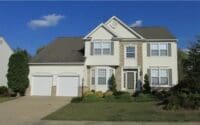 |
Colonial. A two-story design with center hall or side entry. Depending on the neighborhood and the builder, they often have a basement that is below grade. Variations often feature double or single wings. There is often a garage that is either attached or built-in. Numerous styles of Colonials include New England, Federal, Plantation, Dutch Colonial, Georgian, French Colonial. |
| Hi-Rise Condominium. Multi-story building with elevator access to owned apartments; monthly fee usually pays for use of recreation facilities, maintenance and utilities. |
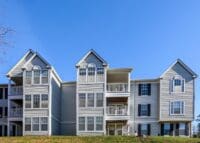 |
Low-Rise Condominium. A cluster of attached units, four stories or less ranging from converted garden apartments to ramblers and two-story townhouses. Resident owns title to living space while jointly owning public areas; condominium fee often covers maintenance, amenities, sometimes water; other utilities may be individually billed. |
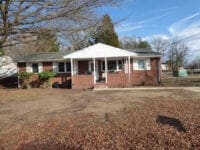 |
Rambler. This is a single-story house with all living areas on the same level. Variations include L-shape or U-shape plan. Depending on the neighborhood and the builder, a Ramber can come with a basement that is below grade. Sometimes this home style is referred to as a “ranch.” A particularly small rambler could be referred to as a “bungalow” or “cottage.” |
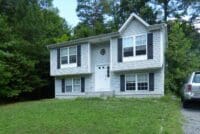 |
Split Foyer. The entryway to this home style is between floors. It makes use of a sloped yard by placing the basement partially above ground level on uphill side. Even if the basement is mostly below grade, it is livable space. Regardless of whether the basement is above grade or below grade, it is not included in the taxable square footage of the home. These homes are also known as a “split entry.” |
| Split Level. Side wing has two levels off main ground floor; designed for maximum living space while occupying the least land. Garage and sub-basement are frequent options. |
 |
Townhouse. A row of two-or-three-story dwellings sharing common walls, also called “row houses”. Wide range of styles from contemporary to colonial. The term “semi-detached” describes a pair of townhouse end units; similar in function to a duplex. |
| Contemporary. Modern and non-traditional creation of living spaces using a spectrum of shapes, materials, and designs. An “open” use of space is characteristic. May be single or multiple stories. |
The style of home you choose should match your lifestyle.
Choosing A House
We believe that we have saved the best for last. In many ways, home finding is easier than choosing a county and a neighborhood, because you are considering tangible details. We can help you simplify the process even more because you can pre-screen homes before we hit the road.
Experience suggests that many people “decide” on a house with emotion and “justify” it with facts. This section will help you find a better balance. First, you should realize that thousands of houses are sold in the area every year. Obviously, it would be impossible for you to inspect the thousands of houses on the market. You can turn this overwhelming selection to your advantage. If you can clearly describe the features you require, we can do a preliminary screening of possible houses for you. After you select the best houses, you can concentrate on inspecting your top choices. The key is knowing what you need.
House Questions
There are also questions you need to answer about how you will use the house:
-
How many people will be living in the house? Do you prefer a new or resale home? What is your preferred housing style? Townhouse, colonial, contemporary, split level, split foyer, Cape Cod, rambler, or something else?
-
How many total rooms do you need? Bedrooms, bathrooms? How strongly do you require features such as: separate living room, dining room, laundry room, basement or attic, family room, fireplace, workshop area, garage? How much property do you require? Do you have preferences for any particular natural features?
House Hunting
Many of our customers find it helpful to keep a record of the houses they inspect. A notebook is handy with pages large enough to record vital information, as well as hold stapled pictures of attractive houses and neighborhoods or clipped advertisements. We will provide you with printed information about any house that we visit. In our experience, after you have looked at 2 or 3 or more houses, it will be very difficult for you to remember what you have seen.
Financial Details
For many people, figuring out the financial aspects of buying a house is the most difficult part. These questions will help you make sense of it:
-
Is the asking price comparable to other houses in the neighborhood? Higher or lower? However, when carefully comparing properties, be sure to take into account the unique features and improvements that vary house-to-house. Our Agent will provide you with a Comparative Market Analysis (CMA) of the house to help you determine if it is priced right.
-
Is the existing mortgage assumable? Required down payment amount? What financing method is acceptable to the seller?
-
What are the annual property taxes? Will the taxes increase with the transfer of deed and a new market price? Are there any local bonds or assessments?
Physical Details
You also need to take time to think about the physical characteristics of the house you want:
-
Outside. What is the address of property? What is the house style? What is the lot size? What are the landscaping details? How much grounds maintenance will be required? What is the age of house? What is the structural condition of the house? Are any major repairs or improvements necessary? What type of maintenance of the building is needed?
-
Inside. Make a sketch of floor plans and note the total number of rooms and baths on each floor. Are there any extras such as an intercom, fireplaces, phone jacks? Are there built-in appliances: dishwasher, garbage disposal, trash compactor? Is there adequate storage space?
-
Construction. Inspect quality of materials, present condition, craftsmanship both inside and outside. What type of insulation does the house have? Is there weather stripping or storm windows?
-
Major systems. You should look at the plumbing, electrical, heating and cooling systems. What type of fuel does the heating system use? What will be the estimated annual cost? A professional inspection of the major systems is recommended for a house that you are interested in purchasing.
House Hunting on the Web
One place to start when looking for your house is to view the properties listed here. We have developed a Locality Index showing properties that are available in various communities … they are all sorted by County and then by Zip Code.
There are also other sites that list home for sale. You can Contact Us to find out about any of them. We can discuss your needs and our agent will explain the process to you, including what it means if we are working as your Buyer’s Agent.
Here’s a brief description of how it works. When a house is listed for sale by any area broker, the home’s vital statistics are fed into the computer: the lot size; the age and kind of home (condo, townhouse, single family); style (colonial, contemporary, Cape Cod, etc.): material (brick, stone, wood); the number, size, and use of rooms (4 bedrooms, 2 1/2 baths, kitchen, living and dining rooms, family room, finished basement and attic, foyer, utility room, garage).
Also included are features (fireplace, walkout deck, patio, wooded lot); equipment (stove, dishwasher, carpeting, etc.); the heating and/or cooling systems; the water and sewage systems; the annual taxes; the mortgage balance, monthly payments and the amount of cash a buyer would need to assume the existing mortgage (if it’s assumable), or the amount of cash required if the seller offers to take a second mortgage; and, finally, the price.
Finger-Tip Home Search
Working for you as your Buyer’s Agent, our agent can put your requirements into the computer. These requirements would include the particular neighborhoods, styles of homes, the number and kinds of rooms, and the price range of the house you want. In minutes, the computer makes a quick search among the thousands of houses that are listed, and prints out all the ones that meet your criteria.
The computer also helps buyers determine which home sellers will offer seller financing. It can calculate the amount of mortgage payments at various interest rates, under various financing plans. It can also help evaluate the investment and the financing that is right for the buyer. The best part is that, unlike most Internet sites that show homes that are available, it is updated each morning, as hundreds of houses enter and leave the market. Even our Locality Index listings cannot be updated this quickly. In short, the only way that you as a home buyer can check out almost everything that’s “out there” at a moment’s notice is to Contact Us so that we can run a specific search for you. Only Realtors can access this information in “real time.”
Our Home Buying Guide — The Starting Point
How Much House Can You Afford? — The Financing is What Matters
What To Look For — Searching the Available Homes
Negotiating the Purchase — You Need an Expert to Negotiate on Your Behalf
Locating the Right Loan — Different Financing for Different People
Protecting Your Investment — Inspections, Appraisals and Insurance
The Big Day! — Finalizing Your Purchase at Settlement
There are many sources for finding homes that are available to buy. One of them is right here with our help, using the resources of the Multiple Listing Service (MLS). The second is to look into new home developments that are offered directly to consumers by builders and developers. The third is to investigate homes that are For Sale By Owner (FSBOs). Our licensed real estate agents can help you with any of these options, although the strategy will be a little bit different for each.
